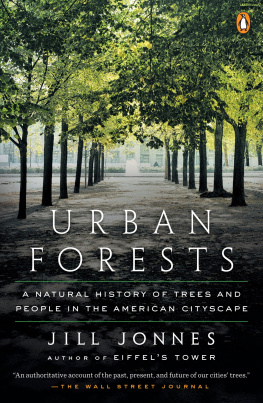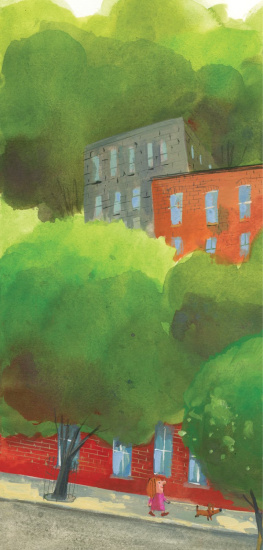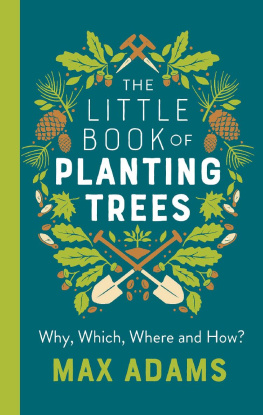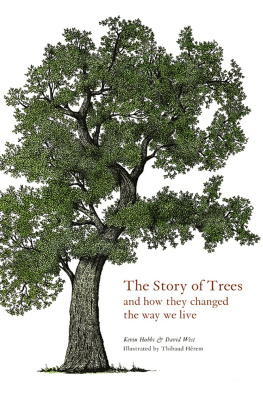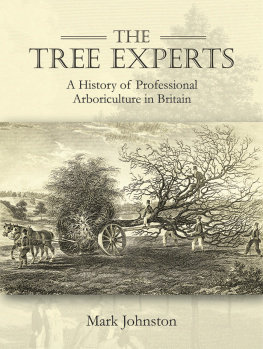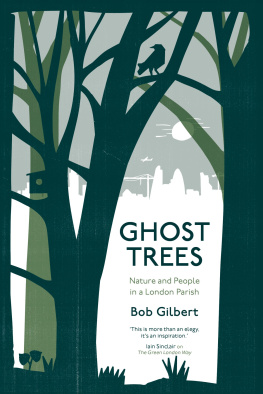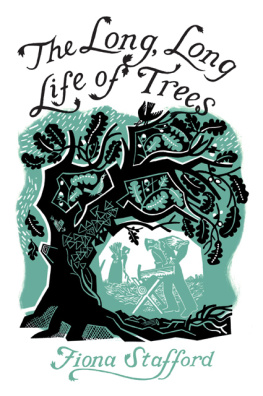Seeing Trees


Seeing Trees

A History of Street Trees in New York City and Berlin

SONJA DMPELMANN

Published with assistance from The Foundation for Landscape Studies and a Deans Annual Research Grant from the Harvard University Graduate School of Design.
Copyright 2019 by Sonja Dmpelmann.
All rights reserved.
This book may not be reproduced, in whole or in part, including illustrations, in any form (beyond that copying permitted by Sections 107 and 108 of the U.S. Copyright Law and except by reviewers for the public press), without written permission from the publishers.
Yale University Press books may be purchased in quantity for educational, business, or promotional use. For information, please e-mail (U.K. office).
Designed by Sonia L. Shannon
Set in Electra type by Integrated Publishing Solutions
Printed in the United States of America.
Frontispiece (detail of ): Chargesheimers view of Stalinallee from the terrace of Caf Warschau, ca. 1953. (Repro: Rheinisches Bildarchiv Kln, Chargesheimer, rba_L010538_32)
): A scene along Madison Square, 1901. (Photo by the Byron Company. Geographic File, box 39, folder: Fifth Avenue 3, image 91237d, New-York Historical Society. Collection of the New-York Historical Society)
): Newly planted silver lindens and flexible seating on Unter den Linden near the intersection with Friedrichstrasse, 1949. (bpk Bildagentur/Kunstbibliothek Staatliche Museen Berlin/Willy Rmer/Art Resource, NY)
Library of Congress Control Number: 2018938623
ISBN 978-0-300-22578-5 (hardcover : alk. paper)
A catalogue record for this book is available from the British Library.
This paper meets the requirements of ANSI/NISO Z39.48-1992
(Permanence of Paper).
10 9 8 7 6 5 4 3 2 1
To my parents

CONTENTS
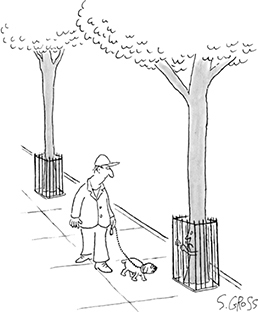
ACKNOWLEDGMENTS
IN THE COURSE OF RESEARCHING and writing this book, I received the help and support of many institutions and individuals to whom I am very grateful. The Foundation for Landscape Studies facilitated this books publication through its David R. Coffin Publication Grant. The Harvard University Graduate School of Design (GSD) and a Deans Research Grant from the school also offered generous financial support for this project. The book was further advanced by the opportunity to develop and offer a variety of seminar and lecture courses at the GSD that revolved around trees. I would like to thank the students in these courses for their engaged discussions and work, and my colleague Gary Hilderbrand for co-teaching a class with me in spring 2015 that enabled us to bring together his knowledge and perspectives on urban trees as a practicing landscape architect with mine as a historian.
I presented some of the first forays of this work in 2014 at the Twelfth International Conference on Urban History in Lisbon, where my paper was part of a panel organized by historians Dorothee Brantz and Peter Clark, to whom I am very grateful. Ever the enthusiast when it comes to nature in the city, Dorothee was among the first to offer encouragement and support when I embarked on this project. I presented papers and lectures related to the book at the Society of Architectural Historians conferences in 2015 and 2016, Princeton University, the University of Oregon, Dumbarton Oaks, the New York Botanical Garden, the Technical University Berlin, the University of Kassel, Leibniz University Hannover, and Albert-Ludwigs University Freiburg: thanks to all who invited me.
I also thank the many archivists and librarians who answered questions and made materials available at Frances Loeb Library and Special Collections of the Harvard University Graduate School of Design, Harvard University Herbaria & Libraries, Harvard University Archives, the Huntington Library, Patricia Klingenstein Library of the New-York Historical Society, Archives at the American Museum of Natural History Research Library, New York City Municipal Archives, La Guardia and Wagner Archives, New York Public Library, New York City Department of Parks and Recreation, Columbia University Archives, Rockefeller Archive Center, Brooklyn Public Library, Brooklyn Museum, Brooklyn Historical Society, Cooper Union Library Archives, Syracuse University Moon Library, DC Public Library Special Collections, Department of Rare Books & Special Collections at Rush Rhees Library of the University of Rochester, Cushing Memorial Library & Archives at Texas A & M University, the State Historical Society of Missouri, Davey Tree Expert Company, Staatsbibliothek Berlin, Stadtbibliothek Berlin, Papiertiger Archiv und Bibliothek der sozialen Bewegungen in Berlin, Archives of Leibniz Institute for Research on Society and Space, Museum Pankow Archiv, Studienarchiv Umweltgeschichte at Hochschule Neubrandenburg, Bundesarchiv Berlin-Lichterfelde, and Universittsarchiv Dresden. Special thanks go to Monika Bartzsch, Kerstin Btticher, and Andreas Matschenz at Landesarchiv Berlin; to Kerstin Ehlebracht and Klaus Wichert at Berlins Senatsverwaltung fr Umwelt, Verkehr und Klimaschutz; and to Stefanie Sentner at Humboldt-Universitt zu Berlin. At Landesdenkmalamt Berlin Leonie Glabau and Heike Waschner gave me access to and entrusted me with materials still stored in boxes in the catacombs of Altes Stadthaus. My research and experiences in Berlin during this project would not have been the same without my conversations with Manfred Butzmann, Hans Georg Bchner, Almut Jirku, Wolfgang Krause, Siegfried Sommer, and Stephan Strauss, who generously offered their time and insights into life, urban trees, and municipal open-space planning during and after Berlins division. Wolfgang Krause found the keys to open storage rooms in Pankow and Prenzlauer Berg filled with documents that may soon land in dumpsters. Not only did he lead me to these hidden spaces that in themselves are part of Berlins landscape history, he also took the time to show me some of the street trees planted under his direction of Prenzlauer Bergs district Department of Gardens before and after the fall of the wall. I also thank Phyllis Anderson, who generously passed on to me her personal collection of street tree brochures from the late 1970s to the mid-1980s; Jrgen Hbner-Kosney, who shared documents from his personal archive; and Joachim Wolschke-Bulmahn for the brochure on trees from his personal antiquarian collection.
Over the years I worked on this project, Dalal Alsayer, Leandro Couto de Alameida, Zach Crocker, Clemens Finkelstein, and Farhad Mirza assisted me in various tasks, especially with the scanning of documents. I thank them for their patience and good humor.
Next page

